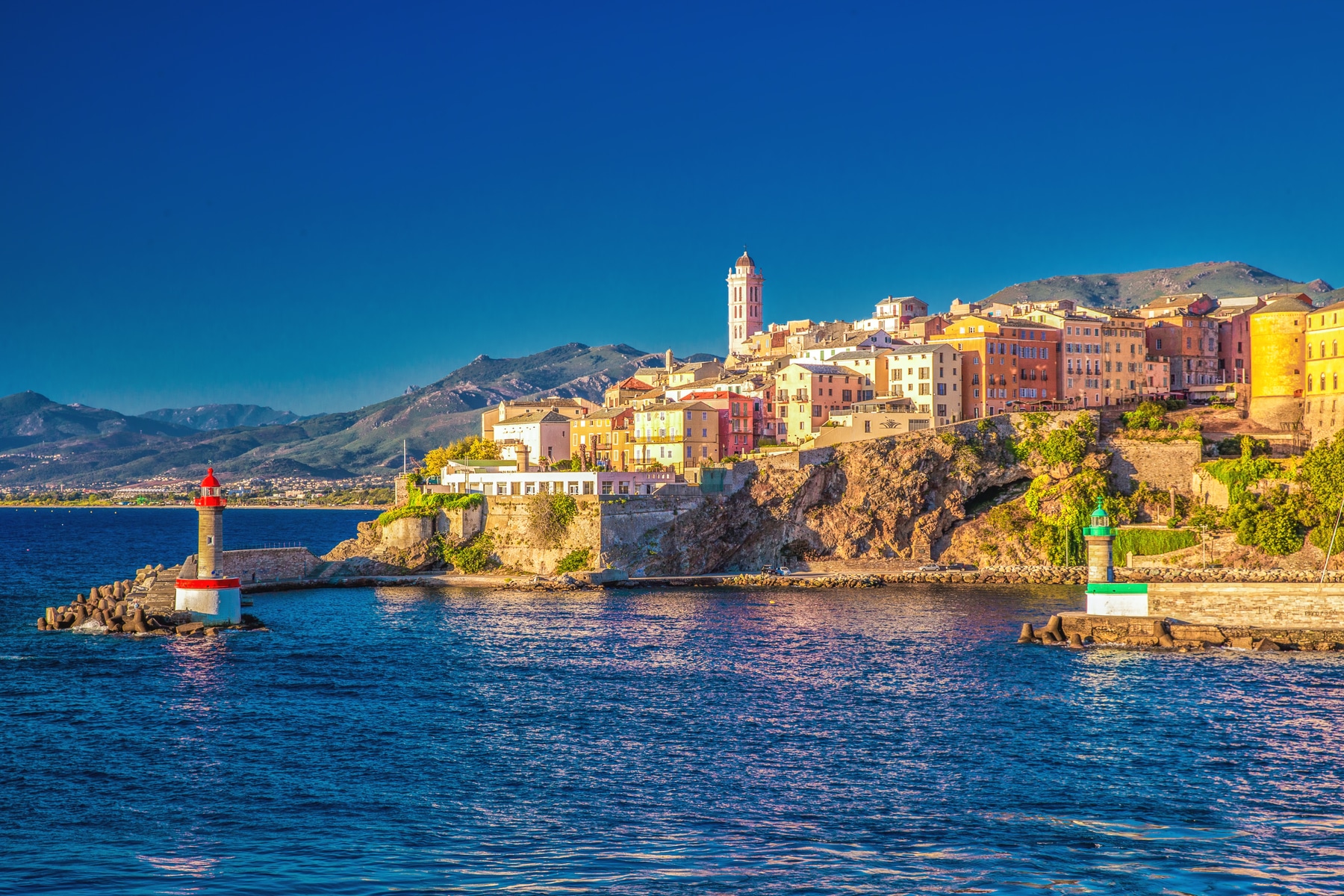Bastia

Two old towns: Terra Vecchia and Terra Nova
Narrow streets, steep staircases, tall houses and squares lined with plane trees and palm trees: Today's Bastia has emerged from the former fishing village around the harbor, the Terra Vecchia. The two bell towers of the baroque church of Saint-Jean-Baptiste are particularly striking. It is the largest church on the island and was built from 1636 to 1666. Inside the somber interior are numerous art treasures and an imposing organ tribune with three paintings.
The construction of the citadel, which gave the city its name (derived from the Italian "bastiglia" for bastille), also gave rise to the Terra Nova neighborhood, surrounded by a wall. One of the most beautiful paths up is on the south bank of the Old Port. Here a wide staircase leads past the Jardin Romieu. Next to the Citadel, whose construction was completed in 1480, in the fortified quarter is the Governor's Palace, built in 1520, which since 2010 houses the Musée de Bastia, dedicated to Corsican folklore.
Opening hours Musée de Bastia
June 2-September 30, 10 a.m.-6:30 p.m;
Closed Mondays in May, June, and September.
Open daily in July and August.
October 1 - April 30 9am-12pm and 2pm-5pm.
Closed Mondays and Sundays and November 1, 11, May 1, 8 and during the Christmas vacations.
The churches of Bastia
In addition to the twin-towered Saint-Jean-Baptiste church on the harbor, Bastia has the small Oratoire Saint-Roch church. It dates from the 17th century, has a neoclassical facade and is dedicated to Saint Roch of Montpellier, the patron saint of plague sufferers. The interior dates from Baroque times, so gold, marble and richly decorated, carved furnishings abound. The Oratoire de l'Immaculée-Conception, on the other hand, shows Baroque elements with stucco elements on the facade. The highlight of the dark interior is a gold Madonna standing on a monster. Within the walls of the fortified city lies the Cathédrale Sainte-Marie. The former bishop's residence from the 15th century has an inconspicuous exterior, but is all the more splendidly decorated inside. Below the God's house, there is a small baroque church, Sainte-Croix, in whose side chapel there is a black wooden cross, which, according to legend, was once fished out of the sea by two fishermen and became a relic.
The New Town - modern life and one of the largest squares in France
The tree-lined Place Saint-Nicolas in Bastia's New Town is 300 meters long and 90 meters ready. This makes it one of the largest squares in the country. The two monuments in the square commemorate Napoleon and the Corsicans who lost their lives in the wars of the past centuries. Parallel to the square runs the Boulevard Paoli, the main shopping street of the city. In the surrounding streets, there are numerous opportunities to watch the action from a café or a restaurant. Just a quarter of the large Place Saint-Nicolas measures the Place du Marché, which is lined with cozy cafes and is a great place to shop locally and traditionally on market days.
[caption id="attachment_26603" align="alignnone" width="800"] The Place Saint-Nicolas[/caption]
The Place Saint-Nicolas[/caption]
Directions
The T11 leads to Bastia. From the northwest, going south on the T30 and east on the T20 is faster than going directly from west to east.